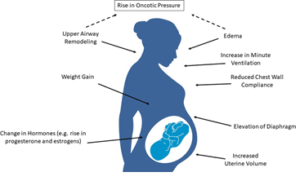Patient-Controlled Anesthesia (PCA)
Patient-Controlled Anesthesia (PCA): A Comprehensive Overview
Read Time: 9 mins
What is Patient-Controlled Anesthesia (PCA)?
Patient-Controlled Anesthesia (PCA) is an innovative pain management method that empowers patients to manage their own pain relief by deciding when they need a dose of pain medication. The medication is delivered through a PCA pump and can be used for various types of pain, including acute, chronic, or postoperative pain. PCA is also widely used in obstetrics for managing labor pain. This system allows patients to administer smaller, more frequent doses of medication, ensuring optimal pain management while minimizing the risk of overdose.
The PCA Pump: How It Works
A PCA pump is a medical device that enables patients to control their pain medication administration. Available around the clock, the pump is activated by pressing a button, delivering a pre-set dose of medication. The PCA pump ensures controlled delivery, preventing overdose by setting a maximum dose limit. This offers a safer and more precise way to manage pain compared to traditional pain management methods.
Common Uses of PCA Pumps
PCA pumps are typically used in various medical scenarios, including:
-
Postoperative Pain Management: After surgeries, patients can use the PCA pump to control pain relief.
-
Chronic Pain Management: It helps manage long-term, severe pain caused by conditions like cancer.
-
For Those Who Cannot Take Oral Medications: When patients are unable to take oral medications, PCA pumps provide an alternative.
-
Hospice Care: PCA pumps can also be used for terminally ill patients experiencing severe pain, such as cancer-related pain, in home care settings.
-
Pain Relief During Labor: Women in labor may benefit from PCA pumps for managing delivery pain.
Who Should Avoid Using PCA?
There are certain medical conditions and situations where PCA may not be suitable or requires careful monitoring. These include:
-
Elderly Patients with Confusion: Older adults who may be disoriented or confused should not use PCA.
-
Young Children: Children under a certain age who cannot follow instructions on proper pump use should avoid PCA.
-
Unresponsive or Disoriented Individuals: Those unable to respond or follow directions are not suitable candidates for PCA.
-
Systemic Infections: PCA should not be used by individuals with widespread infections.
-
Allergic Reactions: If a patient is allergic to the medication being used, PCA is contraindicated.
Certain conditions, while not strictly contraindications, require extra monitoring and may need medical discretion. These include:
-
Sleep Apnea: Patients with sleep apnea need close observation while using PCA.
-
Kidney Failure: Individuals with kidney failure may require adjustments to their PCA treatment plan.
How Does the PCA Pump Work?
The PCA pump is designed to deliver personalized doses of pain medication based on the patient’s specific needs. It works by providing a bolus (a single dose of medication) when the patient presses a button. This bolus can be given in combination with a continuous low dose to maintain a baseline level of pain control. The pump ensures precise medication delivery via various methods:
-
Intravenous (IV): The medication is delivered through a needle inserted into a vein, usually in the arm.
-
Epidural: Pain medications are administered into the epidural space of the spine.
-
Transdermal: The medication is absorbed through the skin.
Medications commonly administered through PCA pumps include opioids (e.g., morphine), local anesthetics, and other pain-relieving drugs.
Setting Up the PCA System
Setting up a PCA pump involves several steps:
-
Medication Prescription: A healthcare provider orders the specific medication and dosage.
-
Dosage Calculation: The provider calculates the amount of medication the patient will receive each time the button is pressed, including the frequency and total allowable dosage.
-
Continuous Baseline Medication: A small continuous dose of pain relief may be set up to maintain baseline pain control.
-
Programming the Pump: All calculations are programmed into the pump by the medical team.
-
Training the Patient: The patient is trained on how to use the PCA pump correctly.
-
Pain Relief Delivery: The patient presses the button to receive pain relief, which is administered intravenously or through the epidural.
-
Monitoring: Nurses monitor vital signs and track the number of doses administered to ensure safety.
Safety Features of PCA Pumps
Safety is a primary concern when using PCA pumps. Some key safety features include:
-
Monitoring of Vital Signs: Nurses closely monitor respiratory function and other vital signs to prevent complications like respiratory depression.
-
Pulse Oximeter: A pulse oximeter is used to monitor the patient’s oxygen levels, with an alarm in case oxygen levels drop below safe thresholds.
Benefits of PCA
The PCA pump offers numerous advantages for pain management, such as:
-
More Effective Pain Control: Patients can receive pain relief on demand without waiting for a nurse to administer a dose.
-
Reduced Anxiety and Stress: Many patients appreciate the control they have over their pain management, which can reduce anxiety.
-
Lower Medication Usage: PCA allows for smaller, more frequent doses, reducing the risk of medication overuse.
Potential Risks and Considerations
While PCA offers many benefits, there are risks, including:
-
Respiratory Depression: This is one of the most serious risks associated with PCA, particularly if doses are not carefully monitored.
-
Infection: As with any medical device, there is a risk of infection at the insertion site.
-
Overdose: Although the PCA pump is programmed to prevent overdose, improper use or programming errors can still pose a risk.
Expert Tips
To maximize the effectiveness of PCA, consider the following tips:
-
Monitor Pain Levels: Regularly assess your pain levels and adjust the PCA settings as needed.
-
Communicate with Healthcare Providers: Ensure that you are aware of the medication being administered and any potential side effects.
-
Understand the Risks: Be aware of the potential risks of PCA, such as respiratory issues, and discuss them with your healthcare provider.
Conclusion
Patient-Controlled Anesthesia (PCA) is an excellent tool for managing pain, offering patients the ability to take charge of their pain relief in a safe and controlled manner. With proper training, monitoring, and support from healthcare professionals, PCA can significantly enhance pain management and improve patient satisfaction.









